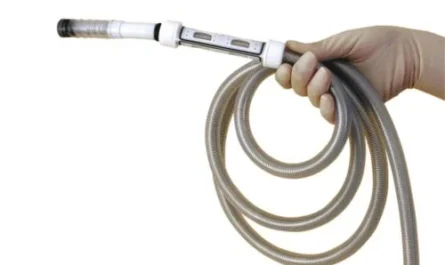
Intracranial pressure (ICP) refers to the pressure within the skull and spinal column on the brain and spinal cord. Normal ICP in adults ranges from 5-15 mmHg. Conditions that can increase ICP include brain tumors, hemorrhages, infections, and head injuries. Left untreated, high ICP can cause permanent brain damage or death. Early detection and treatment of elevated ICP is therefore crucial. Various devices have been developed to closely monitor ICP levels.
Ventricular Catheter Technique
One of the most accurate methods of directly measuring ICP is via a ventricular catheter. This thin tube is inserted into one of the brain’s ventricles through a small burr hole in the skull. The catheter is connected to an external transducer which continuously displays the ICP level. Additional ports on the catheter allow for cerebrospinal fluid drainage if needed. While highly accurate, ventricular catheters carry risks of hemorrhage, infection and malfunction. They require surgical implantation and are usually only left in place for 1-2 weeks.
Subdural and Epidural Sensors
Alternatives to ventricular catheters include subdural and epidural ICP sensors. These intracranial pressure monitoring devices are placed under the skull between the dura mater and brain (subdural) or between the skull and dura (epidural). Subdural and epidural sensors offer less invasive options compared to ventricle catheters but still require surgical implantation. They provide somewhat indirect ICP measurements compared to ventricular devices but risks and recovery times are lower. Sensor placement also avoids damage to brain tissue.
Fiber Optic Monitoring Systems
Fiber optic ICP monitors represent a non-invasive approach. A thin optical fiber is passed through the skull into brain tissue. Laser light passing through the fiber is affected by pressure on the surrounding tissues. This pressure data is converted into an electronic signal providing continuous ICP readings. While needle-based, fiber optic systems do not require actual insertion into the ventricles or placement of hardware under the skull. Risks of infection and hemorrhage are minimized although calibration can initially drift as the probe adapts to body temperature. Accuracy is very good after several hours of use.
Wireless Intracranial Pressure Sensors
The latest advance is wireless intracranial pressure monitoring systems. These small implantable intracranial pressure monitoring devices eliminate the need for external transducer cables, improving patient comfort and mobility. Wireless sensors pair with an external recording unit via low-power radio frequency signals. Data on ICP levels and other vitals can then be remotely monitored. While still at an investigational stage, emerging wireless technology may eventually provide a fully implanted long-term ICP monitoring solution. Challenges involve miniaturization of electronics, biocompatibility, and battery life.
Medical Indications and Clinical Use
Intracranial pressure monitoring is most commonly applied in critical care settings for traumatic brain injuries, hemorrhages, space occupying lesions and hydrocephalus. Continuous ICP data helps guide therapies aimed at keeping pressure levels within a safe range. Specific medical uses include:
– Traumatic brain injury (TBI) treatment and management to prevent further damage from uncontrolled ICP rises.
– Post-neurosurgical care after tumor resection, aneurysm coiling/clipping or drainage procedures. ICP is watched for complications.
– Identifying causes of symptomatic increased ICP such as CSF blockage in normal pressure hydrocephalus (NPH).
– Guiding therapies for cerebral edema, infections, bleeds and other space-occupying processes. Accuratepressure readout aids decision making.
– Research applications, particularly for evaluating new therapies or monitoring conditions affecting ICP like idiopathic intracranial hypertension.
As non-invasive techniques advance, ICP monitoring safety and accessibility continues improving for an expanding scope of neurological conditions. Widespread miniaturization could enable more ambulatory and long-term use.


